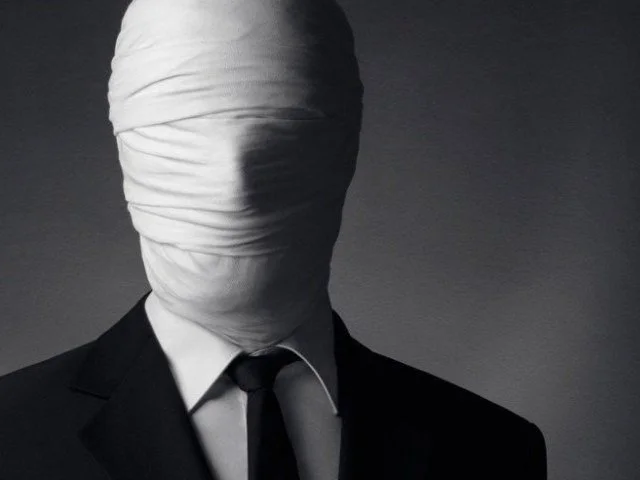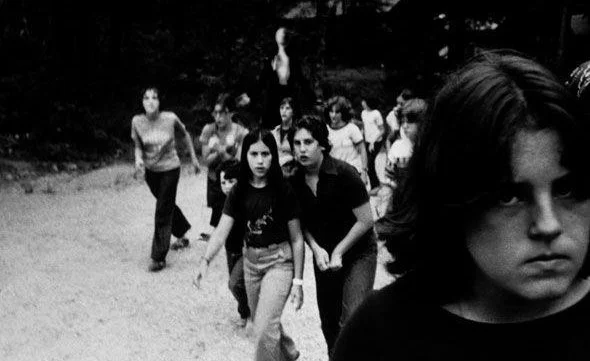The Boogeyman
What is it that makes a child believe? Children love to play pretend, because they are believers. They believe in Santa Claus, the Easter Bunny, happily ever afters, ghosts, the monster under the bed, and the boogeyman.
I suppose we believe in so many things as children because we haven't experienced enough disappointment to become realistic and cynical. The world is large, and full of wonderful possibilities. Because in all our storybooks, the good guys win, evil is destroyed, and the world is always set right. When we are children, it's easier to be hopeful, and to believe.
Perhaps this is also why children are more vulnerable. Because they have faith in the fairytale, and haven't quite learned to be skeptical of those who come with a smile and a treat.
Bedtime Stories
The idea of strange visitors was first introduced to our culture with legends and folklore. Some of these early figures are beloved even today, but their stories sometimes carry dark messages. These seemingly innocent tales are happy on the surface, but are a subtle introduction into the dangers of the world.
J.M. Barrie wrote about a playful little boy named Peter Pan who befriends children and takes them away to a magical place called Neverland, where they can remain carefree and escape adulthood. It sounds like a fantastic child's paradise, but has tragic origins. Barrie found inspiration from his own brother who died at the age of 14. Barrie's mother referred to her dead son as "the boy who would never grow up". In fact, much tragedy surrounds Barrie and the boys that inspired the book. One boy was killed in WW1, another died in a drowning accident at age 20, and Peter himself committed suicide by throwing himself in front of a train.
Barrie found inspiration from his own brother who died at the age of 14. Barrie's mother referred to her dead son as "the boy who would never grow up".
When we consider that Neverland is not a safe retreat, but a final destination, it loses some of it's whimsical quality and becomes more real. It's also a pure example of storytelling. We write and read stories to learn about life and express the things we don't know how to say otherwise. And so, I would argue that the Peter Pan story is actually a beautiful and appropriate expression of grief.
Santa Claus is another uninvited, but benevolent, guest. Even though he comes with gifts and good cheer, there is something a little unsettling about a man who watches your every move and sneaks into your house at night. On top of that, he is often portrayed as traveling with dark counterparts such as Krampus and Belsnickel. These characters give out coal and harsh punishment to unruly children. Krampus will even go so far as to beat children with sticks, stuff them into a sack, and carry them away. It brings some gravity to being on the nice or naughty list. Because if you're a naughty kid, you're not going to get candies and presents like your sweet sister. You're going to get carried off by a Yuletide demon. Our lighthearted Christmas tradition has roots in serious elements that brings real consequences into the life of a child.
You have to do a little digging to find the darkness in Peter Pan and Santa Claus, but there are some old stories that address it head on. Most of us are somewhat familiar with the story of the Pied Piper, who strolled into the village of Hamelin to drive away all the pestilent rats with his magical tunes. When the townsfolk refused to pay him what he was owed, he played another tune. This one lured away the children, who were never to be seen again.
In this tale, the children are helpless to control their fate. They are reaping consequences of actions they did not commit. Maybe the tale of the Piped Piper is less about fearing mysterious strangers, and more about learning that sometimes you can't control the world around you, and that endings aren't always happy.
Modern Boogeymen
While our old tales often have shades of danger and a lesson to be learned, they are mostly forgotten when we become adults. Part of the reason we forget these stories is because they are largely irrelevant to our time and culture. But they are the building blocks for the characters that scare us today - the ones that continue to haunt our dreams well into adulthood.
Stories and cartoons give way to haunted houses and horror movies when we're teenagers. And the stakes get a little higher. It's not a witch living in the creepy woods anymore. It's a superhuman stalker killing our friends and chasing us down for slaughter. This is where things get a little more real, and more relevant to our modern culture.
SLASHERS
Michael Myers, Jason Voorhees and Freddy Krueger are the mainstream boogeymen that have shaped my generation. I grew up with these characters just as I grew up with Disney fairytales and Saturday morning cartoons.
Slasher movies are the modern tales of morality, encouraging children and young adults to heed the warnings of their elders.
The most formidable of this particular set of boogeymen is A Nightmare on Elm Street's Freddy Krueger. He knows the intimate fear of his victims, and visits it upon them during the most vulnerable state of sleep. Freddy is an evolution of the monsters under the bed and in the closet, giving us new reasons to doubt the safety of our own beds.
Freddy is motivated by revenge, taking the lives of the children to collect a debt from the parents. And like the Pied Piper legend, the parents can't save their children in this tale. Our heroine, Nancy, must take matters into her own hands and fight for survival. Not only do slasher films teach us about the pressing danger in the world as we get older, they also serve as a transition step into independence and adulthood.
STEPHEN KING
Mick Garris once called Stephen King "the Norman Rockwell of horror" because his tales are set in everyday American life. King's terror comes not from medieval castles and distant lands, but is rooted firmly in our own neighborhood. Or perhaps lurking in the storm drain out on the corner.
King has written a giant stack of terrifying stories that teach us a great many things about fear. He is responsible for many interesting characters, but Pennywise the Dancing Clown is arguably the most iconic. The 1990 IT miniseries might not be so scary when watched as an adult, but it leaves a very particular scar on children. I cannot tell you how many people I have encountered over the years that have talked about how this movie affected them when they first saw it.
Come on back and we’ll see if you remember the simplest thing of all – how it is to be children, secure in belief and thus afraid of the dark. Stephen King, IT
I suppose it's very fitting that a simple viewing of IT would have a deeper impact on a child. Pennywise preys on children by design. Adults rarely see him. I wonder if he's real to kids precisely because of their belief in werewolves, and mummies, and adventure. As with Santa Claus and Peter Pan, you lose your ability to believe once you become a rational adult. The spirit of the thing never quite goes away (as the adults in Derry can testify to) but the figure becomes an idea rather than a flesh and blood being.
IT is most definitely a pure horror story. But it contains some whimsical imagery, and reminds us just a little bit of some of those old folktales. And in the end, it is the children who have the power to defeat the monster and live happy lives after the nightmare is over. It's a much darker road than that of the fairytales we're used to, but the end remains much the same. Make no mistake, the boogeyman CAN kill you, but he can also be overcome, even when it seems impossible.
CREEPYPASTAS
I have only become aware of Creepypastas in the past couple years, and I have become absolutely fascinated by them. It's quite a pleasant surprise that our digital age full of endless knowledge has seen fit to draw dark corners where unknown things still lurk.
Creepypastas are the campfire tales of our time, giving us reasons to keep believing.
The most popular of these new tales is Slenderman, a tall skinny figure dressed in a black suit who lurks through the woods and takes children away to his home (or, um, kills them). Slenderman is perhaps a perfect blend of fantasy and horror. He is obviously a sinister character, unnaturally following you through the woods with those tentacle arms, but children are also attracted to him, lured by his mysterious presence.
“We didn’t want to go, we didn’t want to kill them, but its persistent silence and outstretched arms horrified and comforted us at the same time…” – 1983, photographer unknown, presumed dead.
And so, we've come full circle with shades of both Peter Pan and the Pied Piper found in Slenderman lore. The campfire has been replaced by websites and memes, but the storytelling remains the same. Our culture feels a very old, primal need to pass on the realities of the world on to the younger generation in a way they can begin to understand.
Technology may evolve, but we will continue to craft tales that remind us of one simple fact. There's something in the dark. Something terrifying. The boogeyman.
Epilogue: Sweet Dreams Are Made of This
I had a lot of nightmares when I was kid, long before I started watching horror movies.
We're born with fear in our hearts, and as children we struggle to grasp the larger concepts that we become so acquainted with as adults. So we put faces and bodies on these ideas we don't understand, and they become bad dreams inhabited by monsters. But culture has also given us coping mechanisms to combat these fearful shapes. It has given us fairytales, heroes and hope.
When I was child, this hope came in the form of a simple prayer. Just a small thing passed down to ease my mind and soothe the uncertainty of the dark.
Now I lay me down to sleep, I pray the Lord my soul to keep, and if I die before I wake, I pray the Lord my soul to take.
Sweet dreams....




